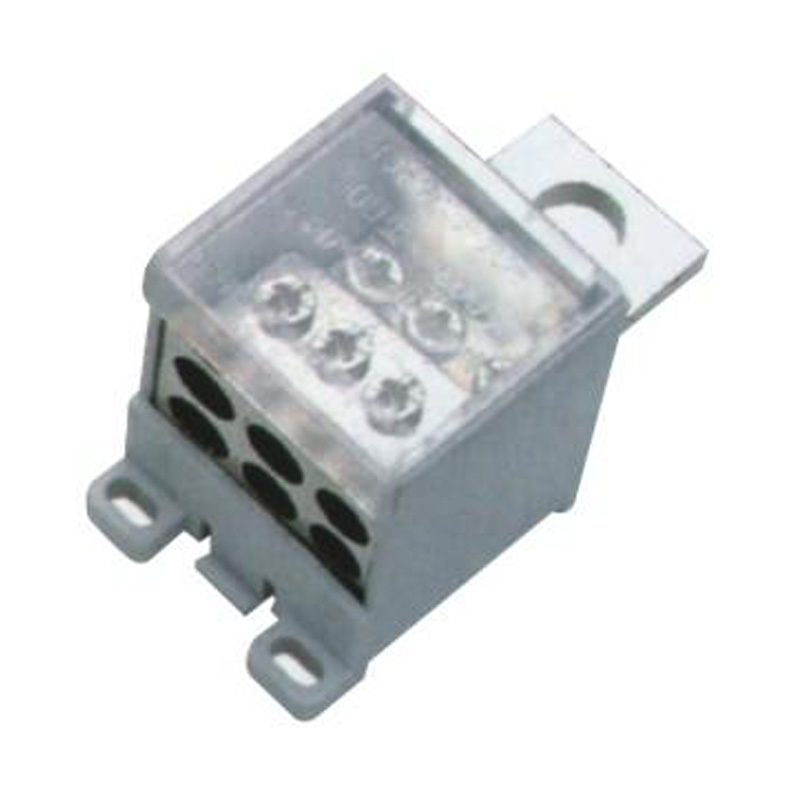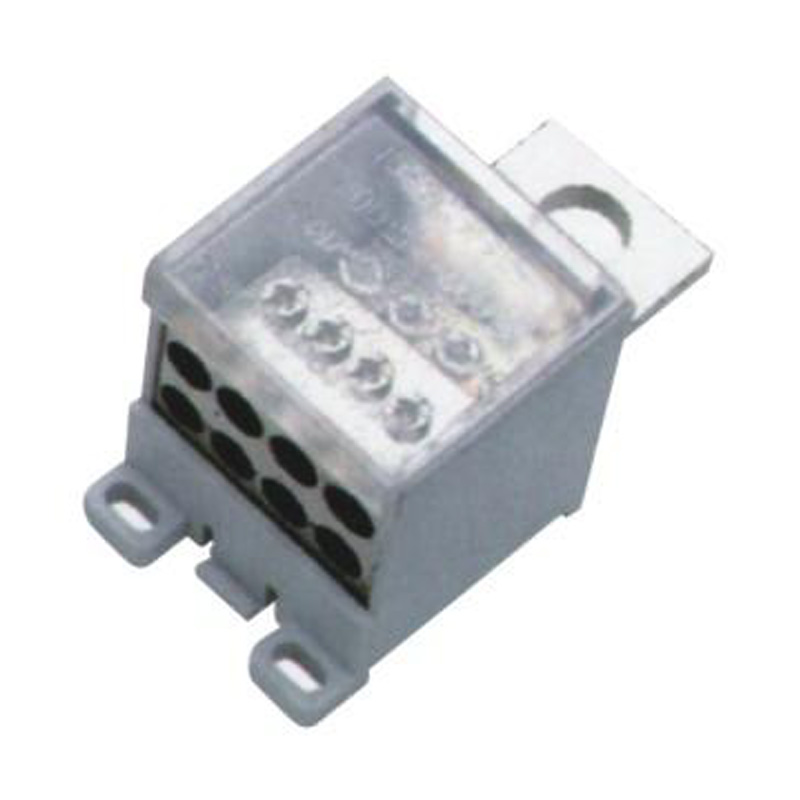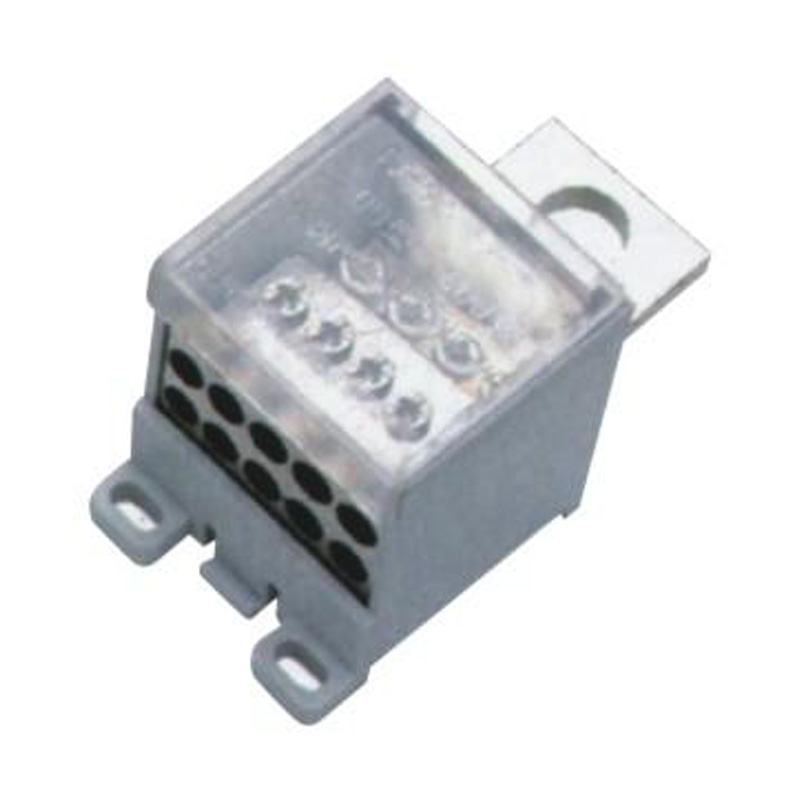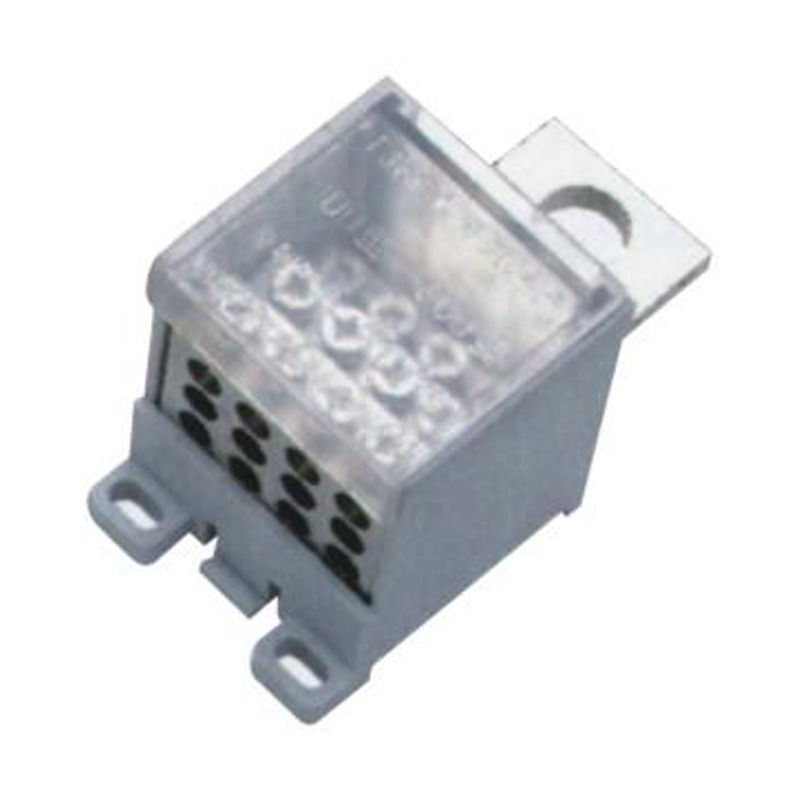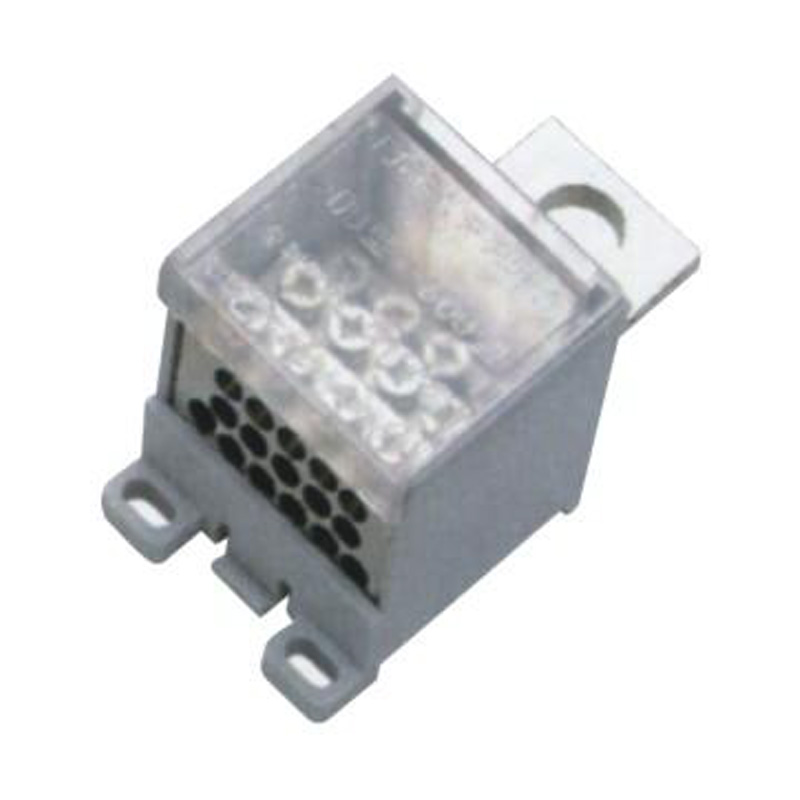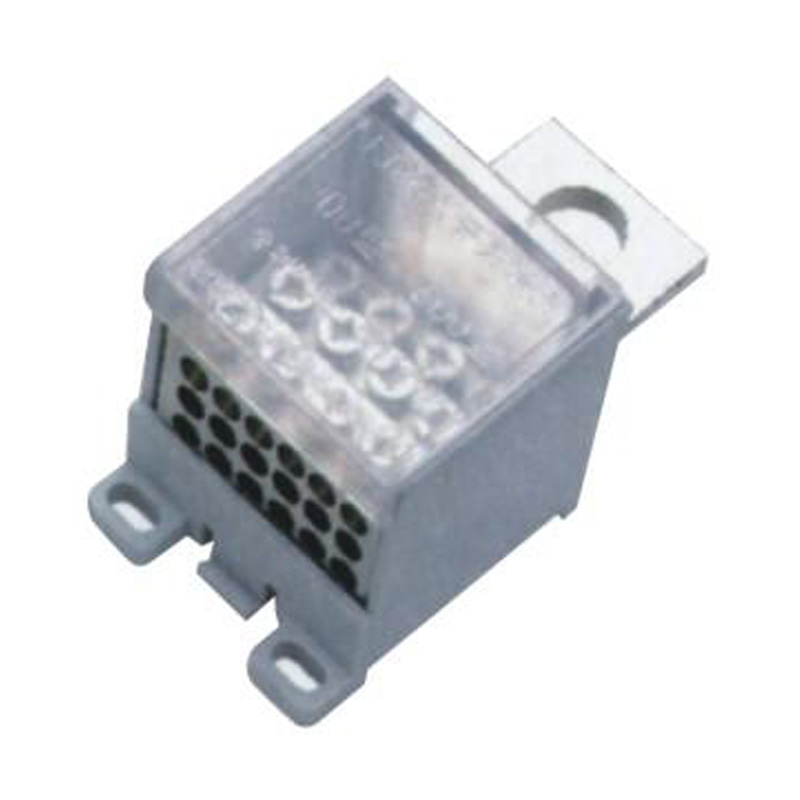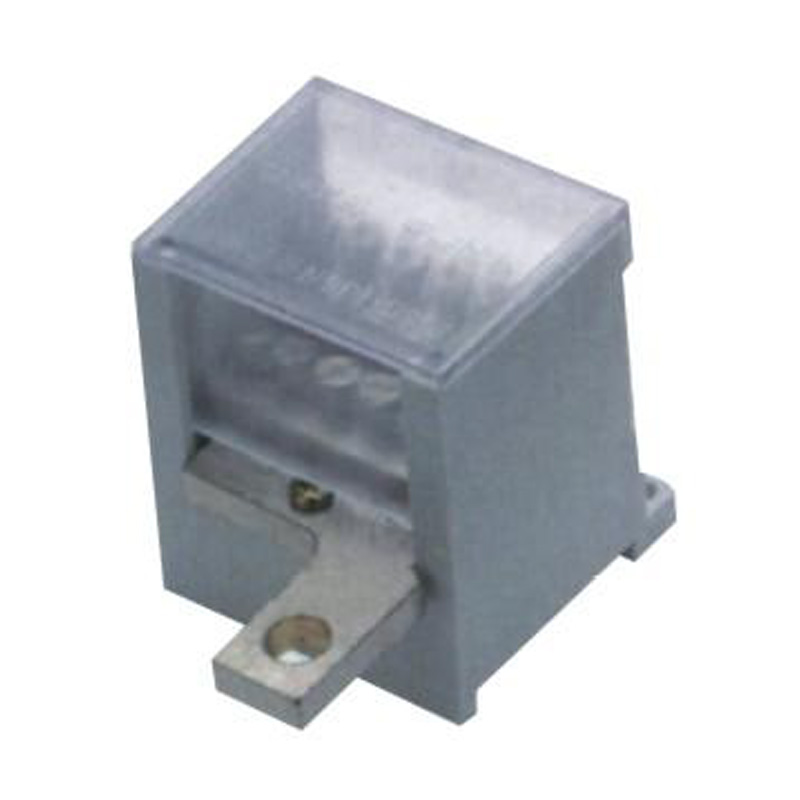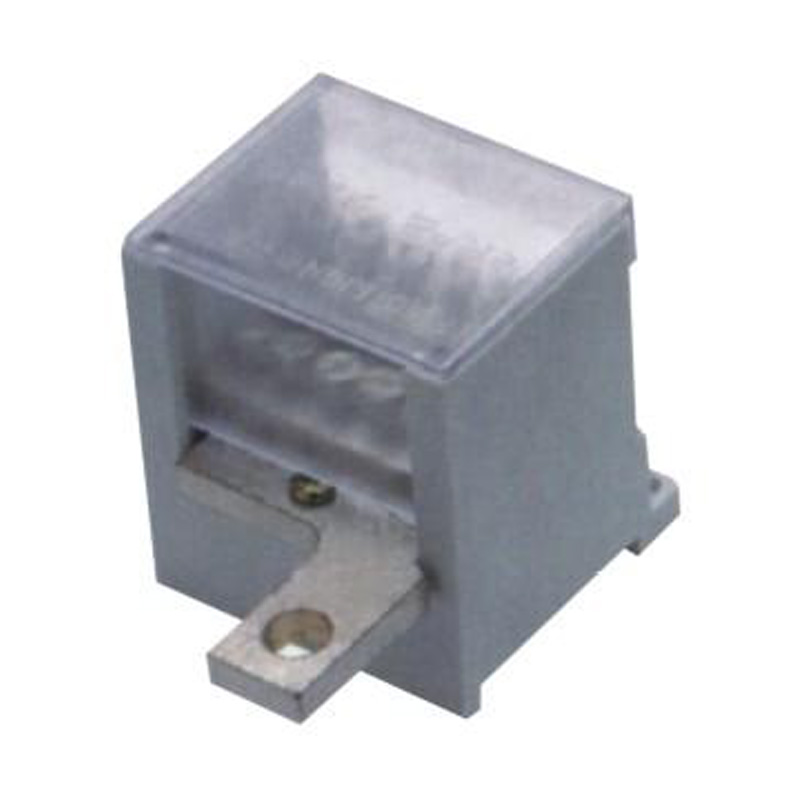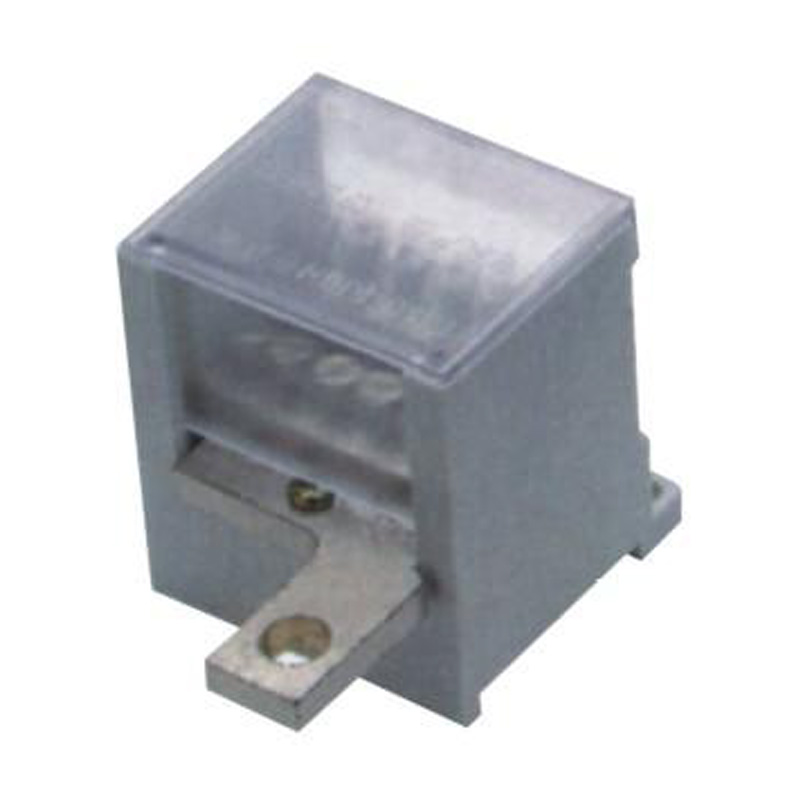In modern electrical control panels, a dual row terminal block combined with Din Rail Terminal Blocks provides an efficient soluti...
READ MOREWide Range of Wire Diameters Neutral Line Terminal Manufacturer
Wide Range of Wire Diameters Neutral Line Terminals are professionally used for providing versatile and reliable connections for neutral conductors in electrical systems. These terminals are specifically designed to accommodate a broad spectrum of wire diameters, making them highly adaptable for various applications in residential, commercial, and industrial settings.
These terminals feature a flexible design that allows for secure connections across different wire sizes, ensuring stable electrical performance regardless of the conductor type or diameter. The robust construction of these terminals ensures durability and reliability, even under continuous electrical load and varying environmental conditions.
Wide Range of Wire Diameters Neutral Line Terminals are currently a versatile and reliable solution for managing neutral connections in electrical systems. They simplify the installation process by providing a single terminal solution that can handle multiple wire sizes, enhance system reliability through their robust design, and ensure consistent electrical performance. Their adaptable design makes them suitable for a wide range of applications where maintaining a stable neutral connection is essential for safe and efficient operation.
FJ6N-400/25-70/6x16 Neutral Line Terminal
FJ6N-400/25-70/6x16
One-inlet,six-outlet
Inlet wire:25-70mm²,outlet wire:1.5-16mm²
Order number:150951
FJ6N-400/25-70/8x16 Neutral Line Terminal
FJ6N-400/25-70/8x16
One-inlet,eight-outlet
Inlet wire:25-70mm²,outlet wire:1.5-6mm²
Order number:150952
FJ6N-400/25-70/10x16 Neutral Line Terminal
FJ6N-400/25-70/10x16
One-inlet, ten-outlet
Inlet wire:25-70mm²,outlet wire:1.5-16mm²
Ordernumber:150953
FJ6N-400/25-70/12x16 Neutral Line Terminal
FJ6N-400/25-70/12x16
One-inlet,twelve-outlet
Inlet wire:25-70mm²,outlet wire:1.5-16mm²
Order number:150954
FJ6N-400/25-70/16x10 Neutral Line Terminal
FJ6N-400/25-70/16x10
One-inlet, sixteen-outlet
Inlet wire:25-70mm²,outlet wire:1.5-10mm²
Order number:150955
FJ6N-400/25-70/18x10 Neutral Line Terminal
FJ6N-400/25-70/18x10
One-inlet, eighteen-outlet
Inlet wire:25-70mm²,outlet wire:1.5-10mm²
Order number:150956
FJ6N-400/25-70/16x16 Neutral Line Terminal
FJ6N-400/25-70/16x16(right-hand combination)
One-inlet, twelve-outlet
Inlet wire:25-70mm²,outlet wire:1.5-16mm²
Order number:150957
FJ6N-400/25-70/18x16 Neutral Line Terminal
FJ6N-400/25-70/18×16(right-hand combination)
One-inlet, eighteen-outlet
Inlet wire:25-70mm²,outlet wire:1.5-16mm²
Order number:150958
FJ6N-400/25-70/24x6 Neutral Line Terminal
FJ6N-400/25-70/24×6(right-hand combination)
One-inlet, twenty-four-outlet
Inlet wire:25-70mm²,outlet wire:1.5-6mm²
Order number:150959
Search
Categories
-
Energy Measuring Terminal Block(314)
- Energy Measuring Joint Terminal Block(16)
- Polycarbonate Energy Measuring Terminal Block(24)
- Standard Wiring Energy Measuring Terminal Block(4)
- Transparent Shell Energy Measuring Terminal Block(6)
- Multifunctional Test Energy Measuring Terminal Block(10)
- Intelligent Safety Energy Measuring Terminal Block(6)
- Single-Phase Multi-Circuit Output Terminal Block(12)
- Self-Elevating Metering Box Terminal Block(7)
- One Household One-Meter Meter Box Dedicated Terminal Block(56)
- Three-Phase Metering Box Dedicated Terminal Block(24)
- Repeatable Grounding Line Terminal Block(20)
- Terminal Block for One-Inlet Multi-Outlet Metering Box(15)
- Closed Terminal Block(11)
- Heavy Current Terminal Block(48)
- Self-Boosting Terminal Block(5)
- Intelligent Self-Locking Terminal Block(3)
- Tool-Free Crimping Type Terminal Block(5)
- Wide Range of Wire Diameters Terminal Block(5)
- Combined Type Energy Measuring Terminal Block(37)
-
Switch Terminal Block(55)
- Pin-Type Incoming Line Switch Terminal Block(4)
- Multi-Way Connection Switch Terminal Block(4)
- Plug-pin Switch Terminal Block(7)
- Combined Type Switch Terminal Block(7)
- High Contact Cross Section Switch Terminal Block(7)
- Wide Range Switch Terminal Block(11)
- One Way in Switch Terminal Block(12)
- Equipped with Circuit Breaker Switch Terminal(3)
-
Heavy-current Terminal Block(631)
- Modular Building Block Terminal Block(156)
- Spherical Non-Destructive Crimp Terminal(120)
- Dual-Mode Connection Electrical Terminal(90)
- Anti-Electricity-Theft Terminal Block(74)
- Convenient Connection Terminal Block(12)
- High-Contact Section Terminal Block(12)
- Wide Range of Wire Diameters Neutral Line Terminal(9)
- Heavy-Current Neutral Line Terminal(9)
- Upper and Lower Rows of Neutral Terminal(2)
- Independent Neutral Line Terminal(7)
- Nose-Type Neutral Line Terminal(7)
- Rail Type Neutral Line Terminal(9)
- Fixed Neutral Line Terminal(12)
- Double Rail Assembly Electrical Terminal(19)
- Blue Jack-Up Terminal(6)
- Black Base Copper Bar Terminal(5)
- Compact Terminal Block(16)
- Precision Terminal Block(23)
- U-Shaped Harpoon Terminal(2)
- Grounding Metering Box Terminal Block(12)
- High-Performance Terminal Block(19)
- Multifunctional Terminal Block(10)
- Din Rail Terminal Block(76)
- Watt-hour Meter Connector(49)
-
Energy Meter Accessories(116)
-
-
As electrical systems become more advanced, the demand for more reliable, durable, and efficient components grows. Connectors Term...
READ MORE -
Ensuring that connector terminals are properly installed is critical for the long-term performance and reliability of any electric...
READ MORE -
Selecting the correct terminal is essential for the stability and efficiency of any electrical system. For professionals in the el...
READ MORE -
Electrical systems rely on high-quality components for safe, efficient, and reliable operation. One such crucial element is the co...
READ MORE -
Using the right junction box and circuit breaker block junction box can bring more than safety — it can significantly improve inst...
READ MORE
Proper installation of electrical components is crucial for system safety and reliability. Wide range wire diameter neutral line terminals and neutral distribution terminal boxes are common in electrical panels, and correct handling ensures stable performance.
What Are The Consequences Of Improper Installation Of a Wide Range Wire Diameter Neutral Line Terminal?
Improper installation of a wide range wire diameter neutral line terminal can have serious implications for both safety and system performance. Three key aspects highlight the risks involved.
1. Loose or Unstable Connections
If conductors are not properly secured in the neutral line terminal, the connection may become loose over time. Loose wiring can cause intermittent contact, resulting in flickering lights, inconsistent voltage, or unexpected system interruptions. In more severe cases, poor contact can generate heat at the terminal, increasing the risk of component damage or fire.
2. Reduced Electrical Efficiency
Incorrectly installed terminals may create higher resistance points in the circuit. Increased resistance reduces energy efficiency and may affect the performance of sensitive devices connected to the system. Over time, this can higher energy losses, reduced equipment lifespan, and increased operational costs.
3. Safety Hazards
Improper installation can compromise system safety. Exposed wires, inadequate clamping, or incorrectly sized terminals increase the risk of short circuits, electric shocks, or equipment failure. Ensuring that conductors fit securely within the specified diameter range and tightening mechanisms are applied correctly is essential to maintain a safe electrical environment.
Regular inspection and proper installation practices are critical to avoid these issues and ensure the neutral line terminal functions reliably.
Neutral Distribution Terminal Box
A neutral distribution terminal box is used to consolidate multiple neutral wires in a centralized, organized location. This simplifies panel wiring, improves system clarity, and supports safe energy distribution.
Type 1: Modular Neutral Terminal Box
Advantages:
Modular design allows easy expansion or modification of circuits.
Provides clear separation and organization of neutral lines, simplifying maintenance and troubleshooting.
Compatible with various conductor sizes, making it versatile for residential and commercial applications.
Disadvantages:
Requires precise installation to ensure proper alignment and secure connections.
May occupy more panel space if multiple modules are used.
Initial cost can be higher compared to simpler designs.
Type 2: Compact Neutral Terminal Box
Advantages:
Space-saving design fits neatly in smaller panels.
Simplifies connections by grouping all neutral conductors in one location.
Often comes with protective covers to reduce the risk of accidental contact.
Disadvantages:
Limited expansion capability compared to modular designs.
Less flexibility for larger wire gauges or higher current applications.
May require careful handling during installation to avoid damaging closely packed terminals.
By selecting the appropriate neutral distribution terminal box and following proper installation procedures, technicians can maintain organized, safe, and efficient electrical systems.
Improper installation of wide range wire diameter neutral line terminals can loose connections, reduced electrical efficiency, and potential safety hazards. Similarly, choosing the right type of neutral distribution terminal box — modular or compact — involves weighing the advantages and disadvantages in terms of flexibility, space, and installation requirements. Proper installation and selection practices ensure reliable and safe operation of electrical systems, reducing maintenance needs and enhancing long-term performance.



 English
English Español
Español عربى
عربى